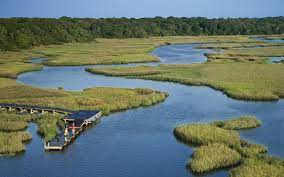Wetlands are among the most biologically productive ecosystems on the planet, providing critical habitat for wildlife, purifying water, and storing carbon. However, wetlands are also among the most threatened ecosystems, with over half of the world’s wetlands having been lost in the last century. In this blog, we’ll explore the causes, impacts, and solutions to the loss of wetlands.
Causes of Loss of Wetlands
The primary causes of wetland loss are human activities, including urbanization, agriculture, and resource extraction. Wetlands are often drained or filled in to create new developments, such as housing or commercial buildings, or to expand agricultural fields. Additionally, wetlands are often targeted for resource extraction, such as logging or mining.
Impacts of Loss of Wetlands
The loss of wetlands has significant impacts on both the environment and human communities. Wetlands are critical for water purification, flood control, and carbon sequestration. The loss of wetlands can lead to increased flooding, reduced water quality, and increased carbon emissions. Additionally, wetlands provide critical habitat for wildlife, and their loss can lead to declines in biodiversity.
Solutions to Loss of Wetlands
The most effective solution to the loss of wetlands is to protect and restore them. This can be achieved through the creation of protected areas, such as national parks or wildlife reserves, and the restoration of degraded wetlands. Additionally, policies and regulations can be put in place to limit the conversion of wetlands for development or resource extraction.
Conclusion
The loss of wetlands is a critical issue, with significant impacts on the environment and human communities. Protecting and restoring wetlands is essential for ensuring clean water, reducing the risk of flooding, and mitigating climate change. By taking action to protect and restore wetlands, we can ensure the long-term health of these critical ecosystems.




